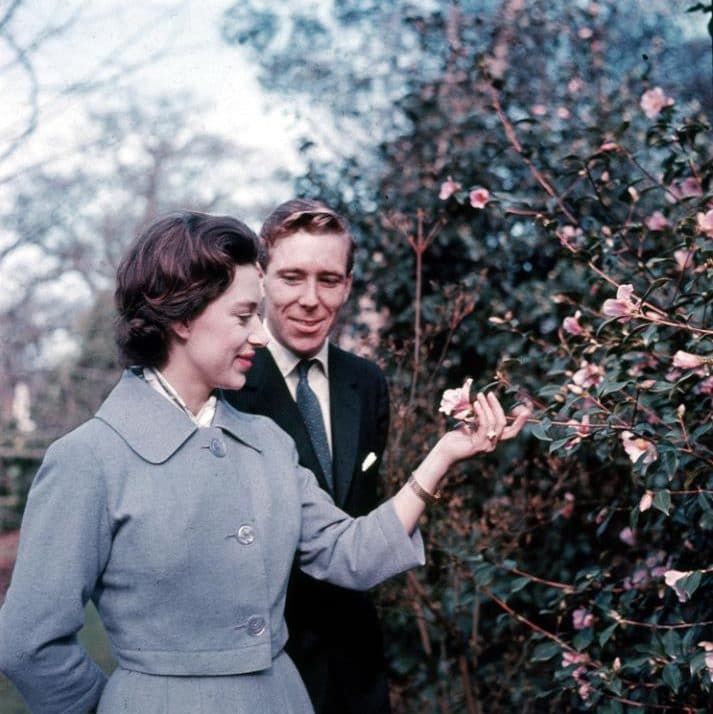
LORD SNOWDON, renown English photographer, filmmaker and ex-husband of Princess Margaret, passed away at his home in Kensington, London on January 13, 2017. He was 86.
Antony Charles Robert Armstrong-Jones was born March 7, 1930, the only son of barrister Ronald Armstrong-Jones and his first wife Anne Messel (later Countess of Rosse), sister of celebrated stage designer Oliver Messel. He was educated at two boarding schools: the Sandroyd School in Wiltshire from 1939 to 1943, and at Eton College, (where his passion for photography began), followed by Jesus College, Cambridge, where he studied architecture but failed his final exams. After university, he first worked as an apprentice under Royal photographer Baron, and then at the age of 21, took up photography as a career, setting up a studio of his own in London. His preference for taking less formal photographs earned him the commission, in 1956, for the 21st birthday pictures of the Duke of Kent. He would later be invited to Buckingham Palace to photograph the Prince of Wales and other members of the Royal Family, including Princess Margaret.
Armstrong-Jones would first meet Princess Margaret, the Queen’s younger sister, at a dinner party hosted by Lady Elizabeth Cavendish, the princess’ lady-in-waiting, in Cheyne Walk, Chelsea. It was February 1958. Margaret was immediately attracted to the photographer’s love of the arts and sense of fun, but initially believed him to be gay. It was only a few years earlier, in 1955, that Margaret was pressured by church leaders, political figures and her own family to end her romance with, and abandon plans to marry, Peter Townsend, a divorced RAF officer.
Margaret and Antony surprised everyone with the announcement of their engagement on February 26, 1960. Princess Margaret, the sister of Queen Elizabeth II and the daughter of King George VI, created a stir with the news, as it was extremely uncommon at the time for such a prominent member of the royal family to marry outside of royalty or nobility. In fact, Armstrong-Jones would be the first commoner to wed a king’s daughter for more than 450 years. The couple were married in an elaborate ceremony in Westminster Abbey on May 6, 1960. It was the first royal wedding to be televised, with millions tuning in to watch.
On October, 1961, Armstrong-Jones was named the Earl of Snowdon in recognition of his Welsh ancestry, and named after his favorite mountain, the highest in Wales. From that point on, Armstrong-Jones was best known professionally as Lord Snowdon. In November of the same year, Princess Margaret gave birth to a son, David, and later to a daughter, Sarah, in 1964. David, who is now the second earl, became Viscount Linley, a furniture maker and chairman of Christie’s UK. Sarah would become Lady Sarah Chatto and an artist.
Amidst tabloid stories of Lord Snowdon’s constant womanising, love affairs and their tempestuous alcohol-fueled rows, the couple announced their separation in March 1976. When the marriage officially ended two years later, Margaret became the first royal to divorce since Henry VIII in the 16th century. Nevertheless, Lord Snowdon’s closeness to the Royal Family saw him take iconic pictures of the Queen and Princess Diana, remaining trusted by the royals even after his marriage to Margaret ended in 1978.
Lord Snowdon took the first official photographs of Diana on the announcement of her 1981 engagement to Prince Charles, The Queen’s official 80th birthday portrait in April, 2006, and the first official pictures of Prince Harry in 1984. He also photographed celebrities such as Marlene Dietrich, Katharine Hepburn, Elizabeth Taylor and Jack Nicholson, enjoying a sixty year career with work featured in Vogue, Tatler and Vanity Fair. Aside from his photographic work, Lord Snowdon also produced several acclaimed BBC documentaries on social issues such as children in poverty, the loneliness of old age, the homeless and the mentally ill, winning two Emmys in the process.
Lord Snowdon would become an adviser to the Council of Industrial Design, keeping a workshop at Kensington Palace where he designed furniture and even a motorised wheelchair for the disabled. Two of his proudest achievements were designing the highly innovative Snowdon Aviary at London Zoo, which opened in 1964, and the setting for the 1969 investiture of the Prince of Wales at Caernarfon Castle, the first royal event to be televised in colour. The cause to which he remained dedicated throughout his life, however, was improving life for disabled people, serving as a trustee of the National Fund for Research into Crippling Diseases, with the Polio Research Fund, and on commissions that examined the needs of the disabled. In 1984, using his fees from royal photographic commissions, he set up the Snowdon Award Scheme (now the Snowdon Trust), which provides further education for disabled people.
Click through for a glimpse in pictures, of the life and work of the late Lord Snowdon …
Image sources: Camera Press, Getty Images, The Guardian, The Associated Press, Pinterest, The Daily Mail
Above, Princess Margaret and Antony Armstrong-Jones at the grounds of Royal Lodge on the day they announced their engagement, February 27, 1960 (GETTY IMAGES)

